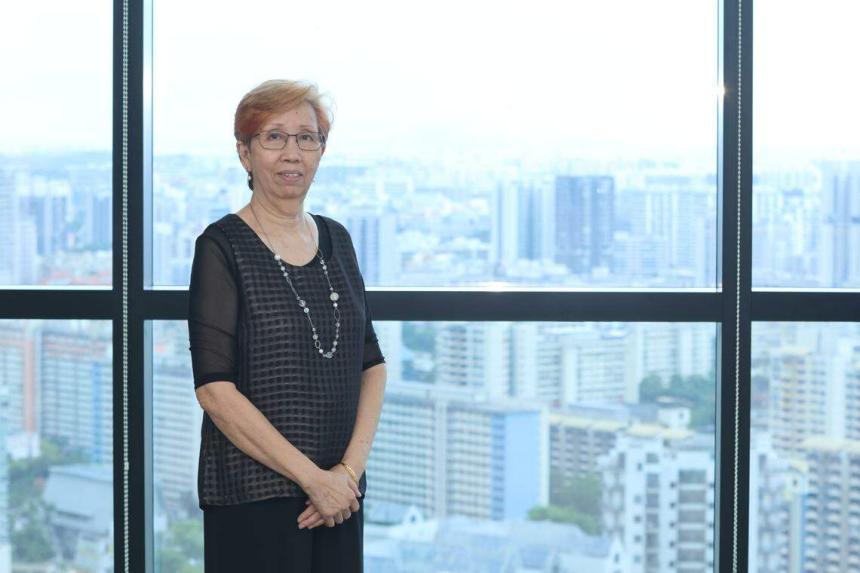SINGAPORE – Respiratory problems rank among the top deadly diseases around the world, but much of the research today does not take into account the context in Asia, such as the climate and the genetics of its people.
Many in Singapore, for instance, have respiratory issues despite being non-smokers their entire life, and scientists are not clear why this is the case.
To answer such questions, a new research centre was launched on Wednesday by Nanyang Technological University (NTU), bringing together experts worldwide to find more effective treatment and prevention from an Asian perspective.
The first-of-its-kind centre will focus on technological innovations to improve lung health, analyse the impact of climate change on respiratory health, and build a database of Asian-focused lung diseases, among other things, said Professor Joseph Sung, dean of the Lee Kong Chian School of Medicine.
The Academic Respiratory Initiative for Pulmonary Health Centre for Respiratory Research Excellence, or Tariph Centre, will bring together 46 organisations, including local hospitals, and over 500 doctors, scientists and policymakers from around the world to contribute to the research.
The centre will also have Singapore’s first panel of patients for respiratory medical research. They will provide details of their experiences of living with respiratory issues to ensure that the treatments rolled out meet the needs of patients.
Respiratory diseases are highly prevalent globally and are three of the top 10 causes of death, according to the World Health Organisation in 2019. They result in some eight million deaths annually, said Prof Sung during the centre’s launch at the Lee Kong Chian School of Medicine’s clinical sciences building in Novena on Wednesday.
Deputy Prime Minister Heng Swee Keat was guest of honour at the event, and in attendance were medical professionals and partners of the centre, among others.
In Singapore, respiratory diseases, especially asthma and chronic obstructive pulmonary diseases like chronic bronchitis, are among the 20 leading causes of disability, said Prof Sung, who is also senior vice-president of NTU’s health and life sciences studies.
“This has a wide-reaching impact on patients. It affects their quality of life and adds financial pressures when hospitalisation and further treatment is required,” he added.

Yet, treatment and services are largely based on research from non-Asian populations in the West and there is a lack of data on whether such guidelines work best for people here, said Associate Professor Sanjay H. Chotirmall, one of the heads of the new centre.
People here are exposed to a different climate and have different genetics, metabolism levels and cultural beliefs from those in the West.
Bronchiectasis, a long-term lung disease that can lead to other forms of infection, is four times more common in Asians than non-Asians, said Prof Sanjay, adding that there is a lack of research to explain why. The number of cases is also rising, affecting 1.2 per cent of the population in Singapore, especially among seniors.
Singapore also has a high rate of hospitalisations caused by asthma compared with other parts of the world, despite the country’s low smoking rates.
“One of the observations made by the centre so far is that up to a third of patients are lifelong non-smokers,” said Prof Sanjay. “This means that there has to be an environmental trigger, which we need to understand in our setting to understand why these patients have developed this disease.”
He pointed to a case of a woman with bronchiectasis who did not smoke but lit joss sticks daily.
“This is a unique cultural aspect that we need to appreciate; it isn’t captured in international studies,” said Prof Sanjay, adding that the anecdotes provided by patient panellists will also shape the centre’s research to ensure that treatment for respiratory diseases matches the needs of patients.
Tariph Centre, which began life as a research network in 2018, has conducted surveys with more than 1,000 patients.
One of the patient panellists, Mrs Nancy Ho, 73, told The Straits Times that she had been looking for a platform to help others who live with long-term respiratory problems.

The retired educator was diagnosed with bronchiectasis in 2011 but found that qi gong – a martial arts exercise – has helped her to regulate her breathing and make the long-term condition more bearable.
She said: “I want to share my experience with others to help them and convey how important it is to exercise.”
Correction note: This article has been edited for accuracy.


